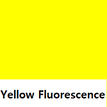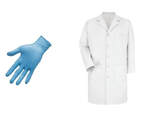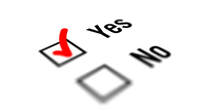|
Formula
Procedure of Application
Development Complete When
Source of Error
Incompatibilities
Precautions
Storage Container
Safety
Recommendations
Similar Reagent
Sequential Reagent
Formula
Acid Yellow 7 Pre-made Solution
Procedure of Application
Development Complete When
Prints will be yellow in color, but will fluoresce a bright yellow under alternate light sources in the blue to blue/green range of 455nm to 470nm. View with an orange barrier filter. Photograph with a comparable orange filter on the lens. Source of Error
Prints wash away due to fixative not being applied. Cyanoacrylate fuming may be detrimental to this reagent. Excessively blood-stained items will obliterate detail. Incompatibilities
Excessively blood-stained items and porous surfaces that strongly absorb the dye will yield little contrast to the developed detail. Porous items will get destroyed by acid content in the solution and waxed items may get eaten away or destroyed as well. Precautions
use in fume hood, wear gloves and goggles due to its potential to be a lung and eye irritant. Storage Container
Store in Flammable cabinet in the bottle it comes in. Safety
Fume hood is required to apply solution. Safety coat and goggles to be worn. Recommendations
Fix blood prior to use. Similar Reagent
Sequential Reagent
None. Vertical Divider
|
Chemical Name
Acid Yellow 7 Surface Used On Blood-stained Non-porous Surfaces Sensitive To Blood Proteins Abridged Reagent Sequence
Vertical Divider
|
Ridge Detail Visualized by:
Blue/Green Light with Orange Filter (455nm-470nm) Reagent Applicabilities: Non-Porous Surfaces Blood Enhancement Other Chemical Name(s): N/A Working Solution Shelf-life: 1 year from opening, unless otherwise indicated by manufacturer |
Process Summary:
A dye staining process preceded by a blood fixative (5% Sulfosalicylic Acid), that is used to enhance detail in faint bloody impressions.
A dye staining process preceded by a blood fixative (5% Sulfosalicylic Acid), that is used to enhance detail in faint bloody impressions.
Accepted Deviations:
Blood fixative not required if the premade Acid Yellow 7 contains 5% Sulfosalicylic Acid.
Blood fixative not required if the premade Acid Yellow 7 contains 5% Sulfosalicylic Acid.
Supporting Reference Materials:
- Enotes.com Inc. World of Forensic Science/Alternate Light Source Analysis, <http://www.enotes.com/forensic-science/alternate-light-source-analysis>. February 7, 2011
- Sears, V.G.; Butcher, C.P.G.; Fitzgerald, L.A. "Enhancement of Fingerprints in Blood, Part 3: Reactive Techniques, Acid Yellow 7, and Process Sequences." Journal of Forensic Identification 2005, Vol. 55, No. 6, p. 741-763






